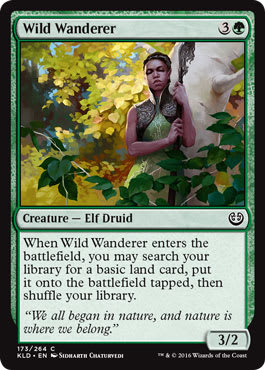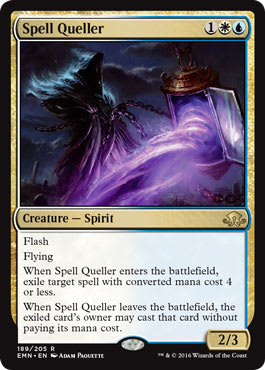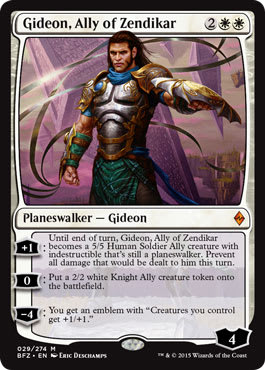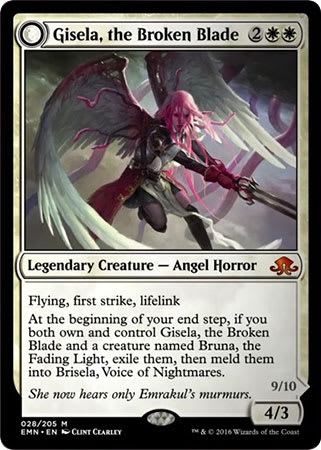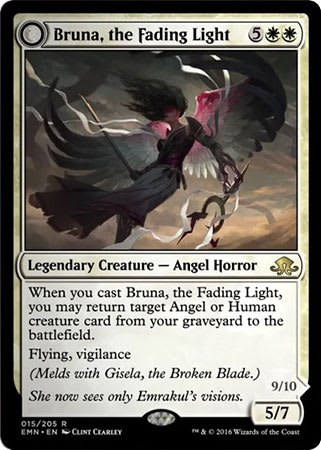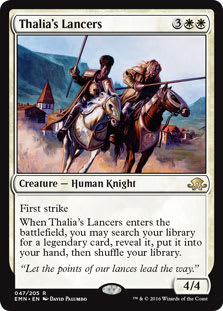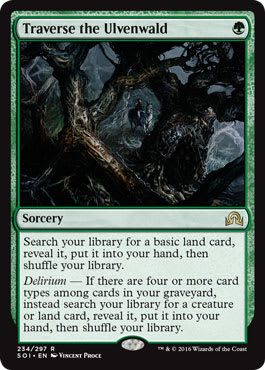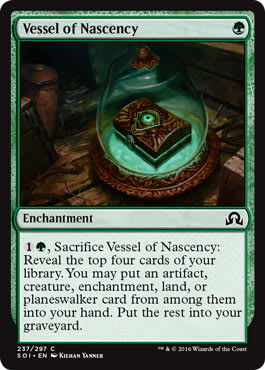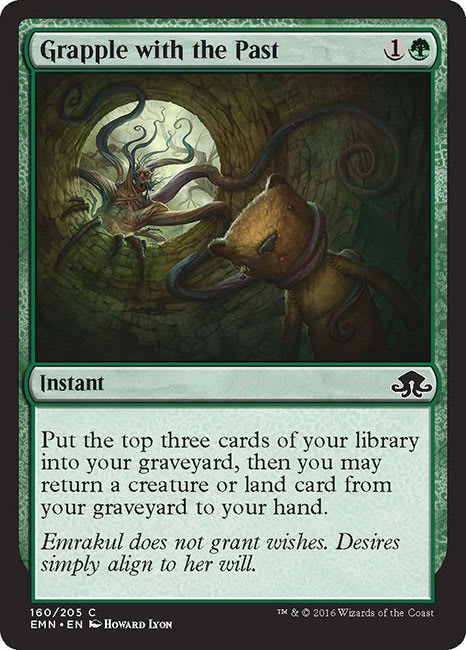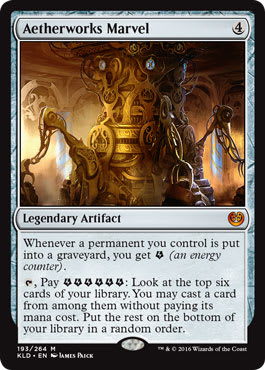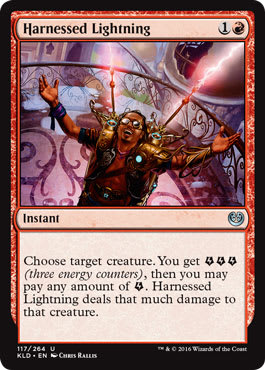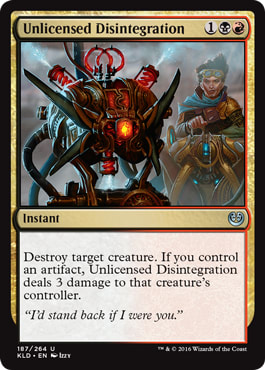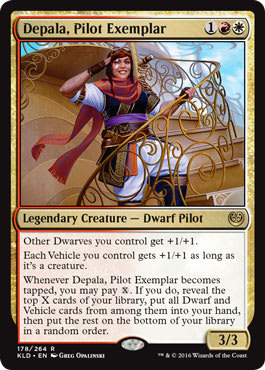Where did you go last weekend?
I went to . . . (Baltimore?, Columbus?, Dallas?, Milwaukee?. Atlanta?) I actually can’t remember.
This may seem hyperbolic, but it legitimately is a common response from me whenever I’m asked where I was the weekend of a tournament.
Traveling can be exhausting.
The airports, the car rides, the hotels, the convention centers, they all eventually blur together to the point where they become virtually indistinguishable. This isn’t a complaint though. The fact the I have the opportunity to travel as much as I do because I’m decent at a card game isn’t something that goes unappreciated by me. Sometimes, it’s just necessary to take a break.
I had played in every Open since the beginning of Season Two of the SCG Tour, but I’ve skipped the last couple in order to prevent myself from getting burnt out. I had a good start to the year and finished 2nd in the Season Two points race, but my results have been underwhelming recently. I want to finish the year strong with solid finishes at the Season Three Invitational and the Player’s Championship, so while I can't wait to get back to competing I think this was ultimately the best decision for me.
With that being said, a break from traveling doesn’t equate to a break from Magic. It’s actually just given me more time, so I’ve been playing a ton. Really, just an absurd amount to be honest. So much in fact, that I’ve gotten a decent amount of games in with basically every playable deck in Standard. So today I’m going to breakdown everything I’ve learned in my testing, and give you all the information you need to pick a deck for your next Standard event.
U/W Flash
U/W Flash aims to get on the board early before proceeding to deploy powerful tempo plays. If it loses the board early it will usually depend on something like Archangel Avacyn to swing the game back in its favor. It's’ comprised of powerful cards and the lists are rather malleable, so it can adjust accordingly depending on the metagame. U/W Flash will remain a top contender throughout the span of the format.
U/W Flash ? Kaladesh Standard | Andrew Jessup
- Creatures (21)
- 1 Elder Deep-Fiend
- 4 Archangel Avacyn
- 4 Reflector Mage
- 4 Selfless Spirit
- 4 Spell Queller
- 4 Thraben Inspector
- Planeswalkers (4)
- 4 Gideon, Ally of Zendikar
- Spells (10)
- 2 Revolutionary Rebuff
- 4 Stasis Snare
- 4 Smuggler's Copter
- Lands (25)
- 10 Plains
- 7 Island
- 4 Port Town
- 4 Prairie Stream
- Sideboard (15)
- 2 Thalia, Heretic Cathar
- 1 Linvala, the Preserver
- 2 Fragmentize
- 2 Blessed Alliance
- 2 Declaration in Stone
- 1 Negate
- 2 Spell Shrivel
- 1 Void Shatter
- 2 Jace, Unraveler of Secrets
After starting with Gerry Thompson’s list, this is where I’m at currently. I’ve played this list to some moderate success online and a PPTQ win this past weekend. Funnily enough, the Elder Deep-Fiend was originally added while borrowing the deck because I needed a replacement for a 4th Gideon, Ally of Zendikar, and it seemed fun to play. The card surpassed any expectations I had for it to such an extent that I made room for one in the main deck. Thalia, Heretic Cathar is a card that’s over-performed in my testing as well. I would love to find room in the main deck for them, but the 3-drop slot is already clogged up more than I would like it to be. I’ve been content bringing them in when I’m trimming on a 3-drop that’s weaker in a given matchup.
Strengths:
- Playing From Ahead: The deck snowballs well. Once you’re ahead, cards like Reflector Mage, Spell Queller, and Gideon will likely ensure you stay ahead. There’s some free win equity here, and I can’t stress enough how important that is in a 15 round tournament.
- Access to Counterspells: My current list has 10 counterspells in the 75 (Including Spell Queller), and it’s entirely impossible it should be more. This deck’s main contenders in being able to claim the title of best deck in the format are fairly top heavy, so counterspells are at premium currently.
- Jace, Unraveler of Secrets: Jace is the most important sideboard card in this deck and is what allows the deck to exist in its current form. It’s +1 ability allows you to play a longer game and bury your opponent in card advantage if needed, but also has the ability to supplement your primary game plan of tempoing them out through the use its -2.
Weaknesses:
- Prone to Flooding: The deck is trying to curve 1-5, so the high land count is necessary and there’s a noticeable lack of mana sinks. Some people elect to play cards like Westvale Abbey or Blighted Cataract to try and compensate for this, but I’ve found this to be a mistake. As I mentioned, this deck is at its best when ahead. So playing cards that increase your likelihood of stumbling in an attempt to slightly improve your late game, doesn’t seem worth it to me.
- Lack of Early Plays: I’m just repeating myself at this point, but getting ahead really is everything with this deck and the lack of solid plays in the early game can complicate this. Thraben Inspector and Smuggler's Copter are great, but Selfless Spirit underwhelmed at almost every point. Even including Selfless Spirit, the deck could use another good 1-drop or 2-drop.
- Ishkanah, Grafwidow/Liliana, the Last Hope: B/G Delirium is the deck’s most difficult matchup, and these cards are the reason why. A resolved Ishkanah is certainly beatable, but it’s impossible to cleanly attack into and generally takes a removal spell for Ishkanah and and an attack or two to clear out the tokens. Liliana is problematic mainly because of Ishkanah. In postboard games you’re heavily incentivized to try and get underneath the delirium player and hold up counterspells for cards like Ishkanah. But if Liliana comes down during the turns you’re still setting up, your clock comes to halt. Liliana also has the ability to recur Ishkanahs meaning you can’t really get into combat with one. You need to find a Stasis Snare or Declaration in Stone to deal with it.
Alternate Tech:
- Gisela/Bruna/Lancers Package: This has become a popular sideboard package to give the deck a way to go over the top in longer games. It’s reasonable, but not absent issues. The most notable being the format’s hostility toward Gisela. The amount of removal spells being played that deal with x/3s is at an all time because of the prevalence of Smuggler's Copter and Spell Queller. I also don’t like this package because I don’t want to be competing on the same axis as decks that want to go long. I would much rather try to get underneath them and use counterspells while closing out the game.
- Ceremonious Rejection: This was one of the most prevalent sideboard cards at the last Pro Tour with people like Lee Shi Tian and Brian Kibler going out of their way to splash Blue for it, but it hasn’t seen much play since. I’m not sold on it yet, but with the R/G Marvel deck increasing in popularity it could be time to sleeve these up again soon.
Position in the Metagame: U/W is the litmus test of the format. Because of its flexibility, it will undoubtedly be a role player for the rest of the format. If your list is well tuned for a weekend, it will always be a viable choice. If your deck is struggling to beat U/W, it’s probably not the best deck to play. It’s possible 3 mana counterspells should move to the main deck soon to combat top heavy decks like Delirium and Marvel. This would likely come at the cost of a few Reflector Mages or Stasis Snares.
B/G Delirium
Originally pushed out of the format by Aetherworks Marvel, B/G Delirium rose to prominence as a counter to U/W Flash after Pro Tour Kaladesh. The deck aims to achieve delirium early on in the game through cards like Grim Flayer, Vessel of Nascency, and Mindwrack Demon. If you fail to close the game out with Grim Flayers or Mindwrack Demons, Ishkanah serves as the perfect bridge to Emrakul, the Promised End.
B/G Delirium ? Kaladesh Standard | Kyle Boggemes
- Creatures (16)
- 1 Emrakul, the Promised End
- 1 Gnarlwood Dryad
- 1 Pilgrim's Eye
- 1 Sylvan Advocate
- 1 Verdurous Gearhulk
- 2 Mindwrack Demon
- 2 Tireless Tracker
- 3 Ishkanah, Grafwidow
- 4 Grim Flayer
- Planeswalkers (6)
- 2 Nissa, Voice of Zendikar
- 4 Liliana, Last Hope
- Spells (15)
- 1 Grapple with the Past
- 1 Murder
- 4 Grasp of Darkness
- 2 Transgress the Mind
- 4 Traverse the Ulvenwald
- 3 Vessel of Nascency
- Lands (23)
- 6 Forest
- 8 Swamp
- 1 Evolving Wilds
- 4 Blooming Marsh
- 4 Hissing Quagmire
- Sideboard (15)
- 1 Gnarlwood Dryad
- 2 Kalitas, Traitor of Ghet
- 1 Noxious Gearhulk
- 1 Dead Weight
- 1 Natural State
- 2 Appetite for the Unnatural
- 2 Pick the Brain
- 1 Ruinous Path
- 1 To the Slaughter
- 2 Ob Nixilis, Reignited
- 1 Westvale Abbey
I like Kyle Boggemes’ take on Delirium and you can read his article about it here. I played against GP Montreal Champion, Hunter Cochran, a couple times this past weekend piloting this list and it seemed solid. Kyle gives up some game in the U/W matchup in order to sure up his mirror match, and I’ve always been a big proponent of building decks like this. It may not be the best strategy for coming in actual 1st at a tournament, but I would much rather have two 55% matchups in an open field than a 60% and a 50%. I also like the additional ways to get on the board early. Failing to stick a Grim Flayer and doing nothing for the first four turns is one of the easiest ways to lose with this deck.
Strengths:
- Consistency: By playing 23 lands with cards like Traverse, Vessels, and Grapple, you’re going to hit your land drops. In addition to this, these cards also mitigate flooding as they can find action as well.
- Late Game: The deck has the ability to go over the top of the large majority of decks in the format. It’s fantastic at clogging up the ground before ultimately deploying an Emrakul and closing out the game
- Versatility: The deck can transition roles well. Cards like Grim Flayer and Mindwrack Demon, do a reasonable job at beating down, but the deck can slow down and start gumming the ground just as easily.
Weaknesses:
- Threat Light: The deck only contains only a few relevant threats. If a deck has access to removal spells that exile in conjunction with any sort of clock, it’s possible to keep them off the board entirely.
- Slow: As I mentioned, the deck makes great use of cards like Traverse, Vessel, and Grapple to filter its draws, but there’s a drawback here as well. If you have to spend your first few turns casting these cards to hit land drops rather than interacting with board, you’re susceptible to getting run over before you get anything going.
Alternate Tech:
- Lost Legacy: Aetherworks Marvel decks are poised to make a resurgence in the metagame, and the current consensus best list is relatively weak to this card as it features Emrakul as it’s only large creature, I haven’t cast Lost Legacy from the Delirium side yet, but I have had it cast against me from the Marvel side. And while it’s not game ending, it’s a definitely a nuisance.
- Gonti, Lord of Luxury: I had this card cast against me in the mirror while I was testing Delirium, and it seemed decent. The ability to steal relevant spells in the mirror combined with your deck’s innate ability to recur it, seems promising. This card isn’t insane by any means, but it’s something worth exploring in the future.
Position in the Metagame: B/G Delirium has been the best positioned deck in the format for the past month or two, but we’re starting to shift away from that. Delirium is certainly still a viable choice, but the increasing popularity of R/G Marvel is problematic for the deck. The deck will likely need to adapt a bit to shore up this matchup, but assuming it doesn’t come at too much of a cost to its other matchups, it will likely remain either one of the best decks or the best deck in the format. It’s possible the aggressive version of the deck may be better in the near future as it has the ability to clock the Marvel decks.
R/G Marvel
Aetherworks Marvel strategies aim to pump out an Emrakul as early as turn four while operating on an axis that’s difficult of interact with. It’s the closest thing to a viable Standard combo deck that’s existed in quite some time, and it adds another to dimension to the Standard Metagame. Current iterations of the deck are less all in on finding and resolving an Aetherworks Marvel though. The R/G version has the ability to just curve Servant of the Conduit, into Chandra, Torch of Defiance, into Ishkanah, and eventually hardcast an Emrakul. This is enabled by sacrificing some of the explosiveness of the initial lists had though.
R/G Marvel ? Kaladesh Standard | Jaberwocki (Logan Nettles)
- Creatures (11)
- 3 Ishkanah, Grafwidow
- 4 Emrakul, the Promised End
- 4 Servant of the Conduit
- Planeswalkers (3)
- 3 Chandra, Torch of Defiance
- Spells (24)
- 2 Kozilek's Return
- 4 Harnessed Lightning
- 2 Tormenting Voice
- 4 Attune with Aether
- 4 Vessel of Nascency
- 4 Aetherworks Marvel
- 4 Woodweaver's Puzzleknot
- Lands (22)
- 4 Mountain
- 8 Forest
- 2 Evolving Wilds
- 4 Aether Hub
- 4 Game Trail
- Sideboard (15)
- 3 Tireless Tracker
- 1 World Breaker
- 2 Natural State
- 3 Tears of Valakut
- 2 Kozilek's Return
- 1 Appetite for the Unnatural
- 1 Chandra, Torch of Defiance
- 2 Nissa, Vital Force
For those who may be unfamiliar with him, Jaberwocki is a great player known for his absurd online win percentage. He plays a ton of Magic, and that’s definitely reflected in this list. The deck has been tuned quite well. It plays out smoothly and all the numbers work when sideboarding. After playing dozens of games with the deck, I couldn’t think of a single change to improve the deck.
Strengths:
- Goldfishing: When unimpeded the deck can consistently get an Aetherworks Marvel in play and online relatively early in the game. This is a big plus for the deck, for several of the most played decks in the format lack the ability to interact with Marvel on a relevant axis. Because of this, it’s not rare for this plan to go entirely unimpeded in a game.
- Ability to play a fair game: The biggest strength of this deck lies in its ability to play a fair game of Magic. Powering out a fast Emrakul will always be Plan A, but the resiliency of the deck is augmented by siding in Tireless Trackers and additional Planeswalkers.
Weaknesses:
- Counterspells/Discard Spells: Despite the deck’s ability to transition into a more fair deck, it’s still reliant on resolving expensive spells and the deck is filled with air. Counterspells and Discard spells offer cheap and efficient ways to deal with their relevant cards.
- Limited Interaction: Similar to B/G Delirium, R/G Marvel will often spend their first few turns setting up for the later stages of the game rather than interacting with the board.
Alternate Tech:
- Thought-Knot Seer: By adding a single Wastes to the list, you move up to 11 colorless sources in the deck allowing you to include Thought-Knot Seer in the list. If the mirror becomes prevalent, it’s easy to imagine this is where you may want to be. Thought-Knot Seer let’s you attack the mirror match on an axis previously not available to you in R/G.
Position in the Metagame: I’m writing this prior to any tournaments that occurred over the weekend, but I think this was the best metagame call for the weekend. It’s great vs Delirium and has game vs U/W. With that being said, it may not be the best choice going forward because both Delirium and U/W can beat it if they have enough of a reason to alter their lists in order to do so.
Mardu Vehicles
Mardu Vehicles is the baseline aggro deck of the format. It pairs the most aggressively costed creatures in the format with resilient threats like Scrapheap Scrounger and Gideon, and backs them up with efficient removal spells. It aims to get under the rest of the decks in the format and close out games as fast as possible.
Mardu Vehicles ? Kaladesh Standard| Gerry Thompson
- Creatures (23)
- 1 Pia Nalaar
- 2 Thalia, Heretic Cathar
- 4 Inventor's Apprentice
- 4 Scrapheap Scrounger
- 4 Thraben Inspector
- 4 Toolcraft Exemplar
- 4 Veteran Motorist
- Planeswalkers (2)
- 2 Gideon, Ally of Zendikar
- Spells (13)
- 2 Unlicensed Disintegration
- 4 Harnessed Lightning
- 3 Cultivator's Caravan
- 4 Smuggler's Copter
- Lands (22)
- 4 Plains
- 6 Mountain
- 4 Aether Hub
- 4 Concealed Courtyard
- 4 Inspiring Vantage
Gerry’s list is a great place to start for Mardu Vehicles. The inclusion of Gideon in the main deck is a great move, for the deck wants a potent, resilient threat and Gideon fits the bill perfectly. After playing with the deck a bit, I would at least one additional copy in the main deck. I also like trimming on Unlicensed Disintegration. It’s an amazing card, but the constraints it puts in the mana base are a real concern. And since the deck only plays 22 lands, casting a Disintegration will often take your entire turn.
Strengths:
- Low Curve: Mardu Vehicles gets on the board faster than any other deck in the format, allowing it to punish slower draws. It places the onus of interaction on the opponent, and threatens to win any game if its threats aren’t answered in a timely manner.
- Removal: By being Mardu, the deck has access to basically all of the best removal spells in the format. Harness Lightning offers an efficient way to take out creatures like Smuggler's Copter and Spell Queller, and Unlicensed Disintegration in tandem with Sideboard Declaration in Stones provide ways to cleanly answer any threat.
Weaknesses:
- Individually Weak Cards: This is often a problem with most aggro decks, but it's especially apparent in Mardu Vehicles. If you’re opponent has access to a couple removal spells to keep you off of an artifact, you risk your entire team being brickwalled by Thraben Inspectors. Conversely, your opponents also have the ability to keep you off your more potent threats, vehicles, if you don’t draw enough cheap creatures.
- Mana Base: Despite including only a few cards that require Black mana, the mana base can be rough. It’s possible I was just getting a bit unlucky while testing the deck, but I often needed to use my Aether Hubs prior to casting a Black spell which would often leave me without Black mana for the remainder of the game.
Alternate Tech:
- Depala, Pilot Exemplar: Thalia is definitely the better 3-drop currently, but if the metagame shifts and Mardu Vehicles needs to be able to keep up on cards in a longer game Depala could merit inclusion in the deck.
- Counterspells: With the resurgence of Marvel, it’s possible the Blue splash could be warranted once again. By adding Spirebluff Canal, you at least arguably have a sufficient amount of Blue sources to include either a few Negates or Ceremonious Rejections in the sideboard.
Position in the Metagame: I had high hopes for Mardu Vehicles going into testing. In theory, an aggro deck seemed like a great place to be, for what I believe to be the best three decks are all susceptible to decks getting underneath them. This may still be true, but I don’t think Mardu Vehicles is the deck to do it, The deck wasn’t quite good enough at getting underneath opposing decks and it lacks any sort of reach to win once you’re opponents have stabilized. Moving forward, I would look to B/R Aggro or R/W Tokens if you want to play an aggressive deck. B/R has a ton of reach in the form of Burn spells and Key to the City and R/W is much better at going wide quickly.
Putting it All Together
I wish I had all the answers and that I could tell you what the best deck is, what the list should like, and how you should be approaching a certain matchup, but unfortunately I can’t. No matter how much work you put in, you can never really be sure. You can only take from what you’ve learned and make an informed decision. So while I can’t promise you’re going to win your next tournament if you play deck x, I was hopefully able to provide you with enough information on the format to make an informed decision on what you think is the best deck for your next tournament.
















